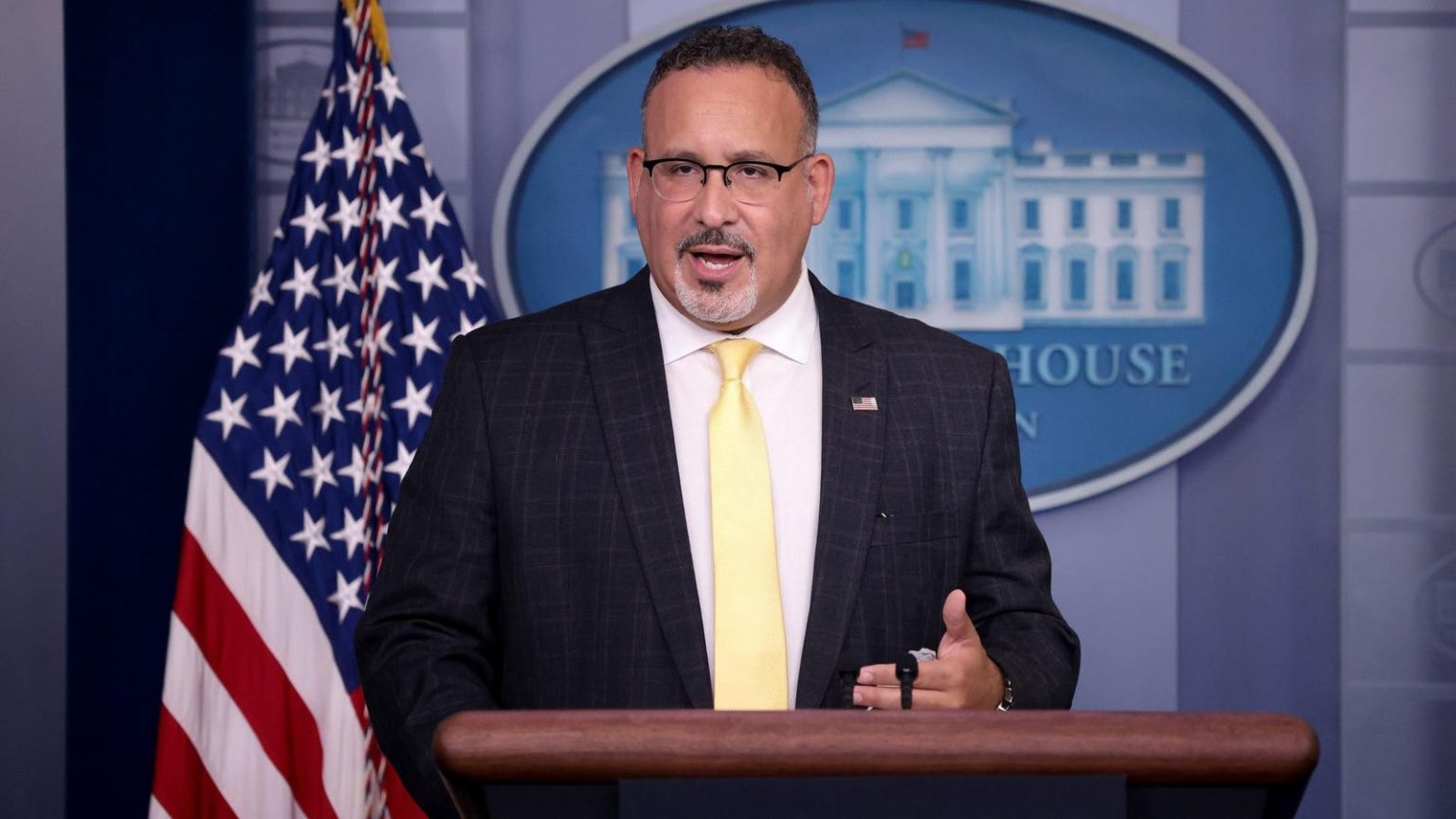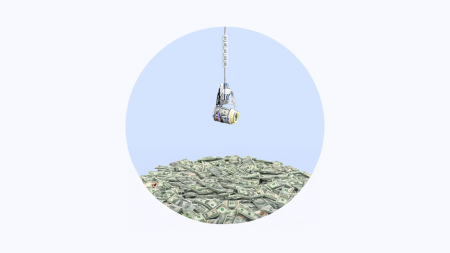The Biden administration has warned that key federal student loan forgiveness, repayment, and consolidation programs could face months of major disruptions as a result of ongoing litigation.
Nearly 20 Republican-led states filed dueling lawsuits in two different courts last spring to try to halt President Joe Biden’s SAVE plan. SAVE is a new income-driven repayment plan that lowers payments and provides varying timelines for eventual loan forgiveness. More than eight million borrowers had enrolled in SAVE by the time the states initiated their legal challenges.
Now, after multiple conflicting court orders, the SAVE program has been thrown into disarray, and its future is uncertain. And the consequences of these decisions are now spilling over into other federal student loan forgiveness and repayment programs, impacting millions of additional borrowers who aren’t even enrolled in the SAVE plan. Advocates for borrowers have warned of chaos.
Here’s the latest.
Student Loan Forgiveness And Reduced Payments Under SAVE Plan Face Legal Challenges
The two lawsuits challenging SAVE are still in the early stages of litigation. But there have already been significant developments.
First, two federal courts — one in Kansas, and the other in Missouri — issued conflicting preliminary injunctions blocking portions of the SAVE plan. A preliminary injunction is an initial order halting a program or law while the legal process moves forward. The Kansas court blocked reduced payments under SAVE for undergraduate loans that were scheduled to go into effect on July 1, but allowed student loan forgiveness under the plan to proceed. Meanwhile, the Missouri court allowed the Education Department to implement the lower payments, but blocked student loan forgiveness.
The Biden administration announced that it would appeal both rulings. And it quickly secured at least a temporary victory at the 10th Circuit Court of Appeals, which stayed the Kansas court’s ruling that had blocked reduced payments under SAVE. This allowed the Education Department to keep borrowers in repayment under SAVE for the time being.
Supreme Court Asked To Block Lower Student Loan Payments Under SAVE Plan
But the Republican-led states in the Kansas-based challenge — spearheaded by Alaska, South Carolina, and Texas — appealed the 10th Circuit’s order to the U.S. Supreme Court. The three states are asking the Supreme Court to reverse the 10th Circuit’s order and reimpose the injunction blocking lower payments, arguing that the program is illegal and that the states would be financially harmed if borrowers have to pay less on their student loans.
The Biden administration counters that the SAVE plan is legal and authorized under the Higher Education Act, which established income-driven repayment plans and delegated the details of these plans to the Education Department more than 30 years ago. The department has relied on this authority at least four times to establish new income-driven options for repayment.
The administration argued to the Supreme Court that reversing some or all of the SAVE plan would cause massive disruptions to the entire student loan system. And the impacts would not just be felt by borrowers enrolled in SAVE.
“To revert to the pre-SAVE plan approach, the Department and its servicers would have to reprogram their systems, retrain their staff, and recalculate monthly payments,” warned administration attorneys in a legal brief filed with the Supreme Court earlier this month. “That process would take at least several months, during which the Department would have no choice but to place many borrowers into forbearance until servicers are able to bill them for the new amounts”
In addition, “The Department would also have to halt electronic applications for IDR and for consolidation loans for roughly 6 weeks. And it would have to devote considerable staff time and other resources to the reprogramming effort, which would detract from other critical priorities.” Officials warned that student loan borrowers would “stand to suffer significant and irreparable harm”
Different Court Blocks All Student Loan Forgiveness And Lower Payments Under SAVE Plan, Causing Turmoil
The Supreme Court has not yet issued a ruling on the 10th Circuit Appeal. But while borrowers were waiting, the 8th Circuit Court of Appeals — which heard an appeal from the Missouri case — issued its own order last week, temporarily blocking the entire SAVE program. This order, which went far beyond the partial preliminary injunction that the Missouri court had issued last month — shocked many borrower advocates.
Shortly after the order was issued, as anticipated by Biden administration attorneys in its brief to the Supreme Court, the Education Department placed millions of borrowers enrolled in SAVE into an administrative forbearance. This is likely the only way the department could immediately comply with an order to cease implementing the SAVE plan.
Disruptions For IDR Plans And Student Loan Consolidation Will Continue
But the impacts of the 8th Circuit’s order are now not just limited to the eight million borrowers enrolled in SAVE. The Education Department also took down the online applications for IDR plans and Direct loan consolidation, which will impact an even larger pool of borrowers. The department needed to do this in order to update the online application system to comply with the court order.
This means that borrowers seeking to enroll in other IDR plans for the first time, those who are looking to switch to a different IDR plan (such as Income-Based Repayment), and borrowers who need to request a recalculation of their IDR payments due to changed financial circumstances, are unable to do so right now using the online application system. It is unclear if borrowers can submit a paper IDR application instead, although typically paper submissions take longer to process and are more prone to errors or rejection.
Similarly, borrowers who are pursuing Direct loan consolidation cannot do so at this time using the online application. And with SAVE blocked, borrowers with existing IDR credit who apply to consolidate their loans now risk losing that credit and re-setting the clock on their student loan forgiveness term (SAVE had a provision that allowed Direct consolidation loans to be credited with the weighted average of IDR credit associated with the underlying loans).
The department has not indicated how long the IDR and consolidation applications will be unavailable. But according to the Biden administration’s Supreme Court brief, it could be at least six weeks. This may also cause cascading issues and backlogs once the applications go back online, which could lead to additional weeks or months of disruption.
Disruptions For Borrowers Pursuing Student Loan Forgiveness Through PSLF
The spillover effects of the 8th Circuit’s order — and the Education Department’s response — will also be felt by the millions of borrowers pursuing PSLF. PSLF can result in student loan forgiveness in as little as 10 years for borrowers who work in nonprofit or government jobs. But in most cases, borrowers can only progress toward loan forgiveness if they are in an IDR plan.
PSLF borrowers who have been on the SAVE plan now cannot make continuing progress toward loan forgiveness, because the forced administrative forbearance does not count toward PSLF, according to the Education Department. And at least for the time being, borrowers pursuing PSLF cannot apply for an IDR plan or switch out of SAVE to a different IDR plan using the online IDR application since the department has taken it down. The department has provided no guidance on whether PSLF borrowers should try to switch out of SAVE, and if so, whether they should use a paper IDR application.
Legal Battle Over Student Loan Forgiveness Shows No Signs Of Letting Up
The legal battle over the SAVE plan is far from over. The 8th Circuit will consider whether to extend or modify its temporary order blocking the program as it reviews arguments for and against a preliminary injunction. Regardless of the specific outcome, that upcoming ruling is likely to get appealed to the Supreme Court, which has already been asked to consider the 10th Circuit’s separate ruling that had allowed the SAVE plan to move forward.
And while the legal wrangling continues, student loan borrowers will likely continue to pay the price.
“It’s shameful that politically motivated lawsuits waged by Republican elected officials are once again standing in the way of lower payments for millions of borrowers,” said Education Secretary Miguel Cardona in a statement last week. “Our Administration continues to vigorously defend the SAVE Plan in court.”
Read the full article here
















